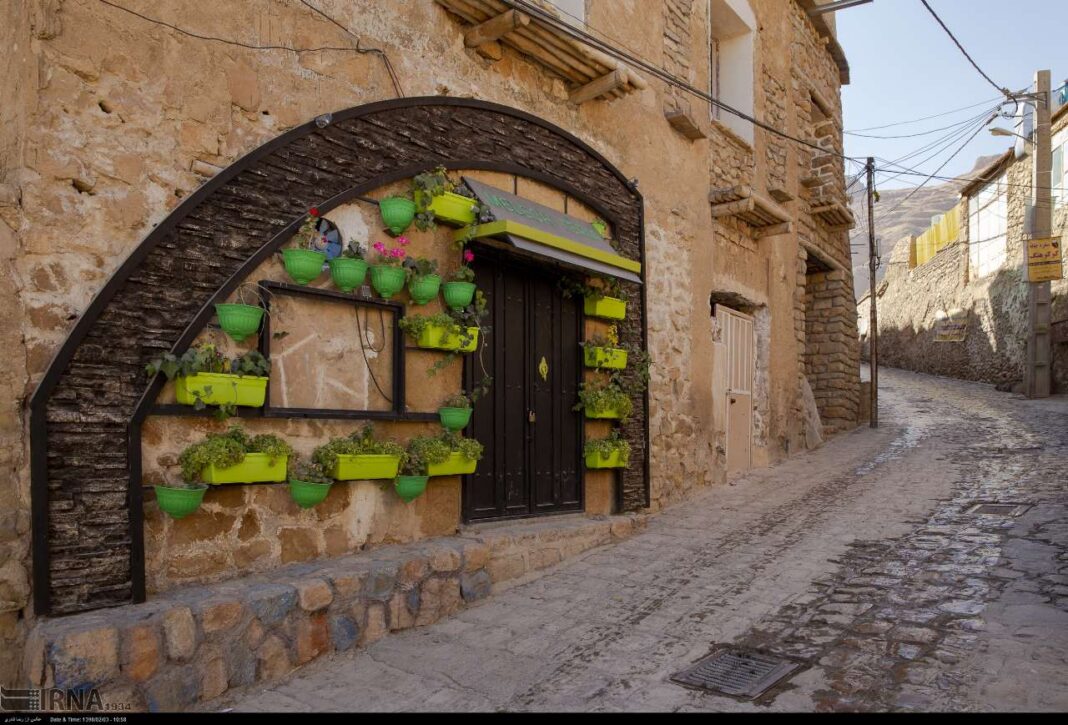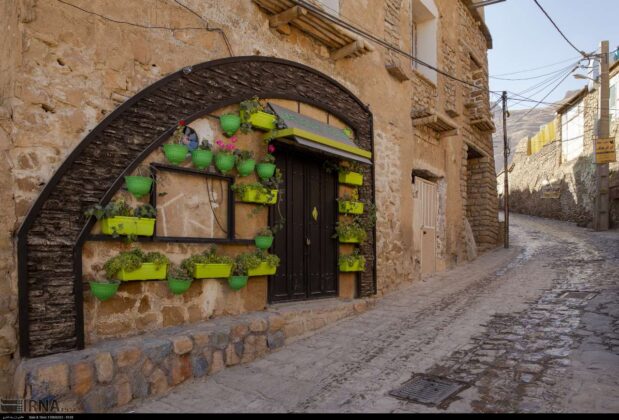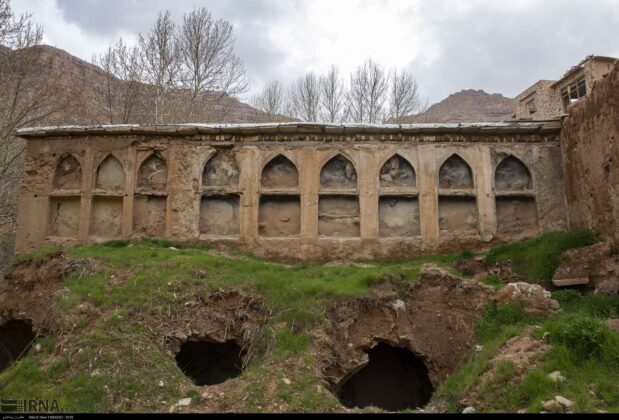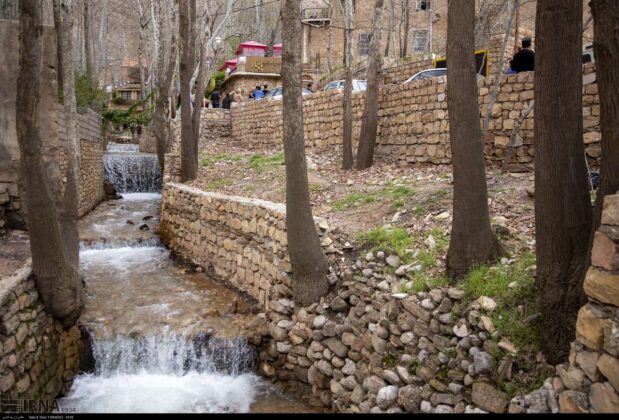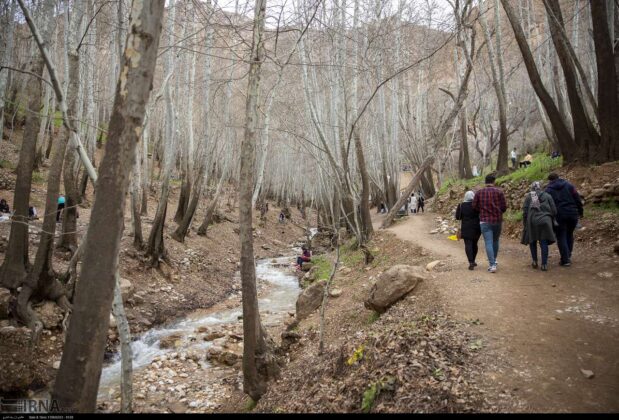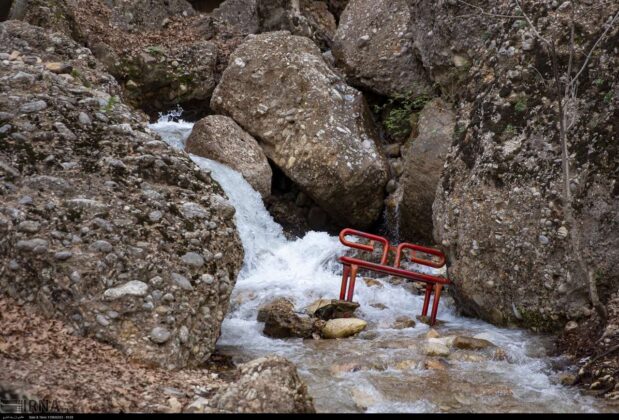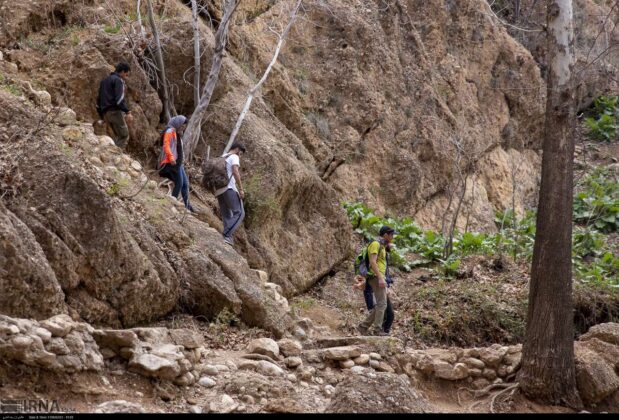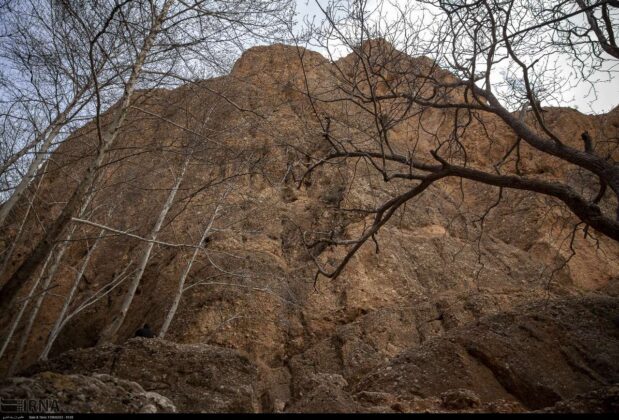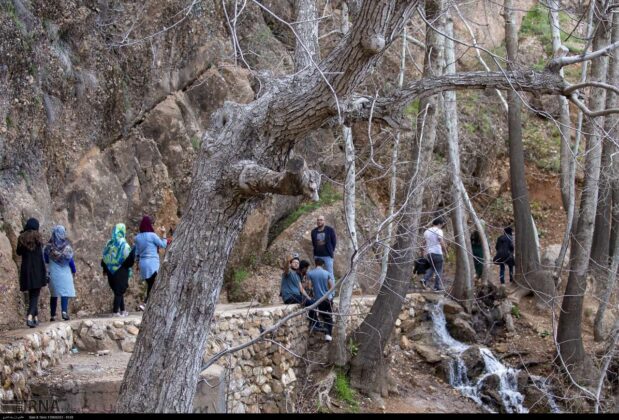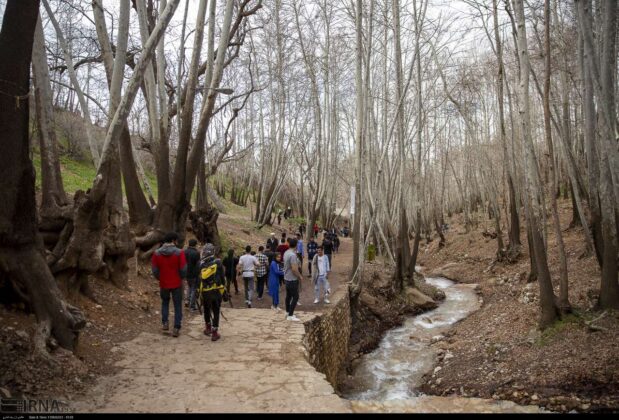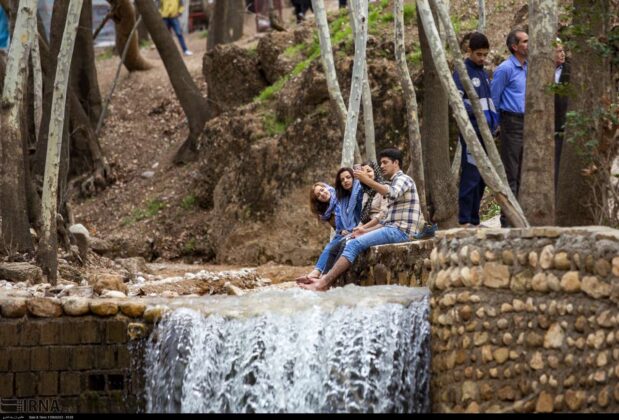The village dates back to several thousand years ago, and a church on the hillside and among the wild trees of Qalat is a testimony to this claim.
One kilometre away from the village, staircase houses – where the rooftop of one house is the yard of the other – are not well visible, as the tall trees cover all of them.
The houses of this village are mostly made of stone, clay, mud, plaster and wood and their ceilings are flat.
Most people in the village of Qalat in Shiraz are engaged in animal husbandry, horticulture and handicrafts. Walnuts, almonds, grapes, figs, pomegranates, apricots, plums and green tomatoes next to dairy products such as milk, cheese, butter and whey are the main products of this village.
Other items that people sell to make a living are giveh (a kind of soft, comfortable, durable and handwoven-top shoe common in several parts of Iran), hand-made baskets, musk (used to keep water cool) and wooden tools.
Next to its beautiful nature and unique waterfalls, there is an old church in the village which has a stone-like and interesting architecture and represents the old history of this village. The church, which was the pastoral home of Christians in the countryside, now has been ruined after the immigration of local people.
Water mills, the Qalat cemetery, the carvings, and, most importantly, the Qezel Arsalan castle are other attractions of the historical village.
What follows are IRNA’s photos of the village:
